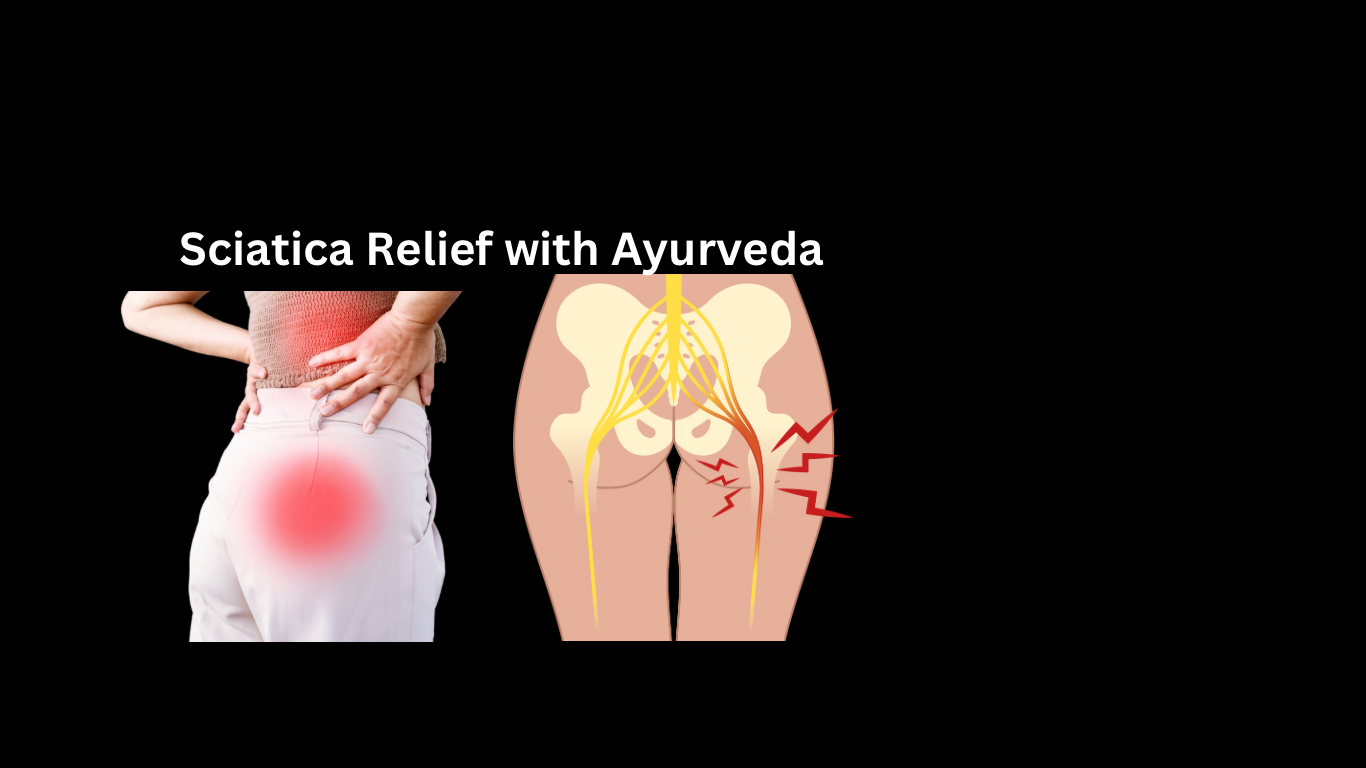
Sciatica Management in Ayurveda
- Bhawna Mittal
- Dec 9, 2024
- 2 min read
Sciatica, known as “Gridhrasi” in Ayurveda, is a condition characterized by pain radiating along the sciatic nerve, which runs from the lower back through the hips and buttocks down each leg. The term “Gridhrasi” is derived from the word “Gridhra” (vulture), as the gait of a person suffering from sciatica resembles the limping walk of a vulture. Ayurveda attributes sciatica to an imbalance of the Vata dosha, sometimes combined with Kapha dosha, which affects the nerves and muscles.
Causes of Sciatica (Nidana)
1. Vata-Kapha imbalance: Accumulation of Vata dosha can lead to dryness and rigidity, while Kapha contributes to heaviness and obstruction.
2. Poor posture or prolonged sitting.
3. Excessive physical activity or lifting heavy weights.
4. Improper diet leading to Ama (toxins).
5. Trauma or injury to the lower back or hips.
6. Degenerative changes in the spine (e.g., herniated discs).
Symptoms of Sciatica in Ayurveda (Lakshanas)
• Pain starting from the lower back and radiating down one leg.
• Stiffness or heaviness in the affected leg.
• Tingling or numbness.
• Reduced flexibility and strength in the lower back and leg.
• Difficulty in walking or standing for long periods.
Ayurvedic Management of Sciatica
1. Panchakarma Therapies (Detoxification)
• Basti (Medicated Enema): The most effective treatment for Vata disorders. Special herbal oils or decoctions are used to nourish and balance Vata.
• Kati Basti: Retaining warm medicated oil on the lower back to relieve pain and inflammation.
• Abhyanga (Oil Massage): Using Vata-pacifying oils like Mahanarayan or Bala Ashwagandha Taila to relax muscles and reduce stiffness.
• Swedana (Herbal Steam Therapy): Helps alleviate pain and improves mobility by reducing Kapha and Vata.
• Virechana (Purgation): To detoxify the body and balance Pitta and Kapha, aiding in Vata regulation.
2. Herbal Remedies
• Dashmoolarishta: A decoction that pacifies Vata and alleviates pain.
• Guggulu preparations: Such as Yogaraj Guggulu and Trayodashang Guggulu for anti-inflammatory and analgesic effects.
• Ashwagandha: Strengthens nerves and reduces Vata.
• Shallaki (Boswellia): Provides anti-inflammatory benefits.
• Rasna (Pluchea lanceolata): Used for joint and muscle pain relief.
3. Dietary Modifications
• Focus on a Vata-pacifying diet:
• Warm, cooked, and easily digestible foods.
• Incorporate ghee, sesame oil, and spices like ginger, turmeric, and black pepper.
• Avoid cold, dry, and processed foods.
• Reduce intake of sour and heavy foods to balance Kapha.
4. Lifestyle Recommendations
• Avoid strenuous activities that aggravate Vata.
• Practice light, gentle stretches and yoga asanas.
• Maintain good posture and avoid sitting or standing for extended periods.
• Use warm compresses for pain relief.
5. Yoga for Sciatica
• Bhujangasana (Cobra Pose): Strengthens the lower back.
• Salabhasana (Locust Pose): Reduces nerve compression.
• Setu Bandhasana (Bridge Pose): Alleviates stiffness in the spine.
• Dhanurasana (Bow Pose): Improves flexibility and strength.
Ayurvedic Oils for Local Application
• Mahanarayan Taila: Reduces pain and stiffness.
• Bala Ashwagandha Taila: Strengthens nerves and muscles.
• Nirgundi Taila: Reduces inflammation and provides relief.
Sciatica treatment in Ayurveda with Holistic YAA emphasizes a holistic approach that addresses the root cause, balancing the doshas, and supporting overall health through detoxification, rejuvenation, and lifestyle changes.
Book Ayurvedic appointment :







